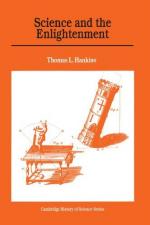|
This section contains 1,221 words (approx. 4 pages at 400 words per page) |

|
Isaac Newton
Newton was one of the chief forces that led to the development of science in the Enlightenment. Although most of his work was done prior to the Enlightenment, the force of his work, especially his developments in Physics and Mathematics, inspired others and gave them the tools necessary for more advanced scientific study. His development of calculus and laws of motion as well as his theory of gravity were revolutionary. The calculus allowed more advanced modeling of motion and the development of a scientific approach to physics. His laws of motion and theory of gravitation showed the type of conclusions that careful analysis of nature could lead to and inspired scientific inquiry all over Europe.
Despite the enormity of his scientific contributions, second to none in the history of science, Newton may have actually been more important during the Enlightenment for his method. His method became the...
|
This section contains 1,221 words (approx. 4 pages at 400 words per page) |

|




